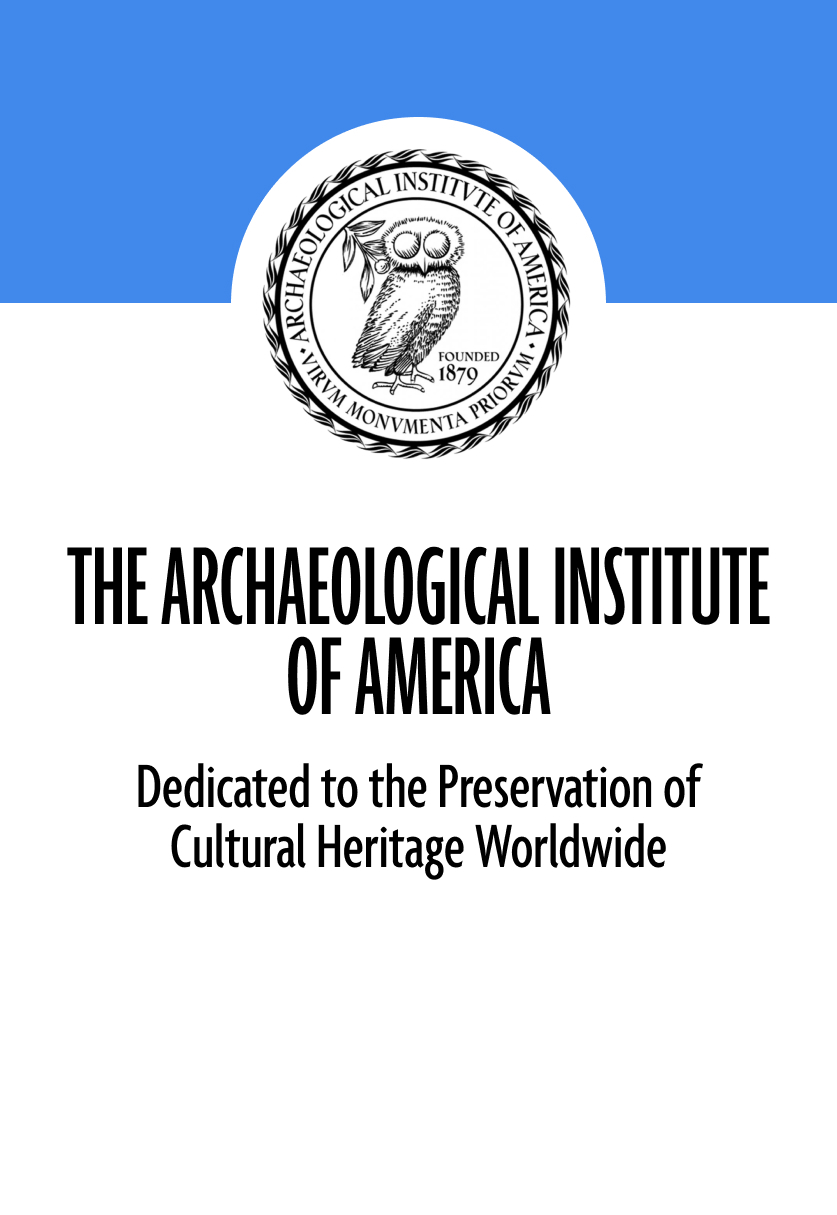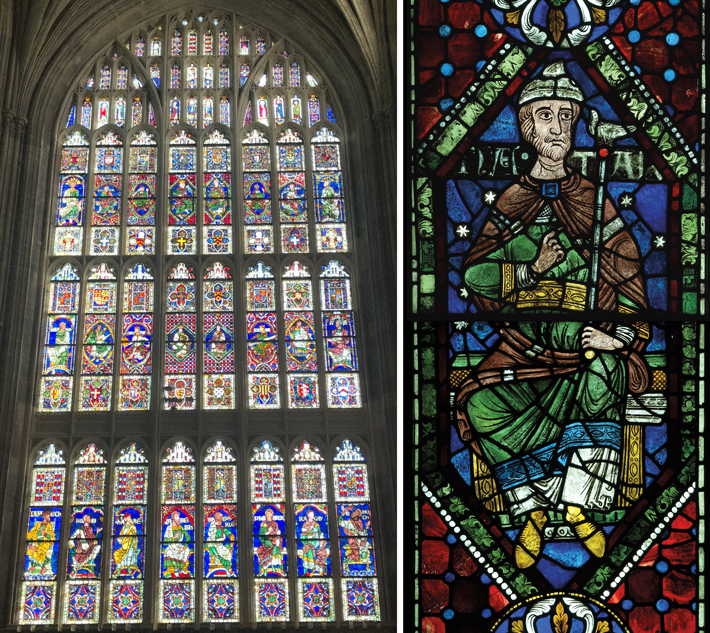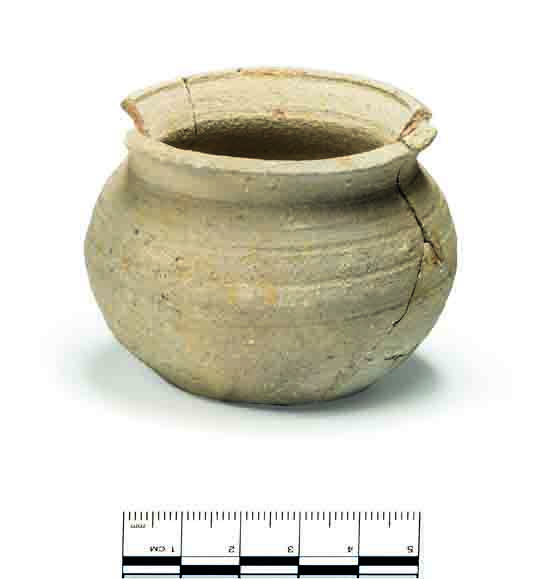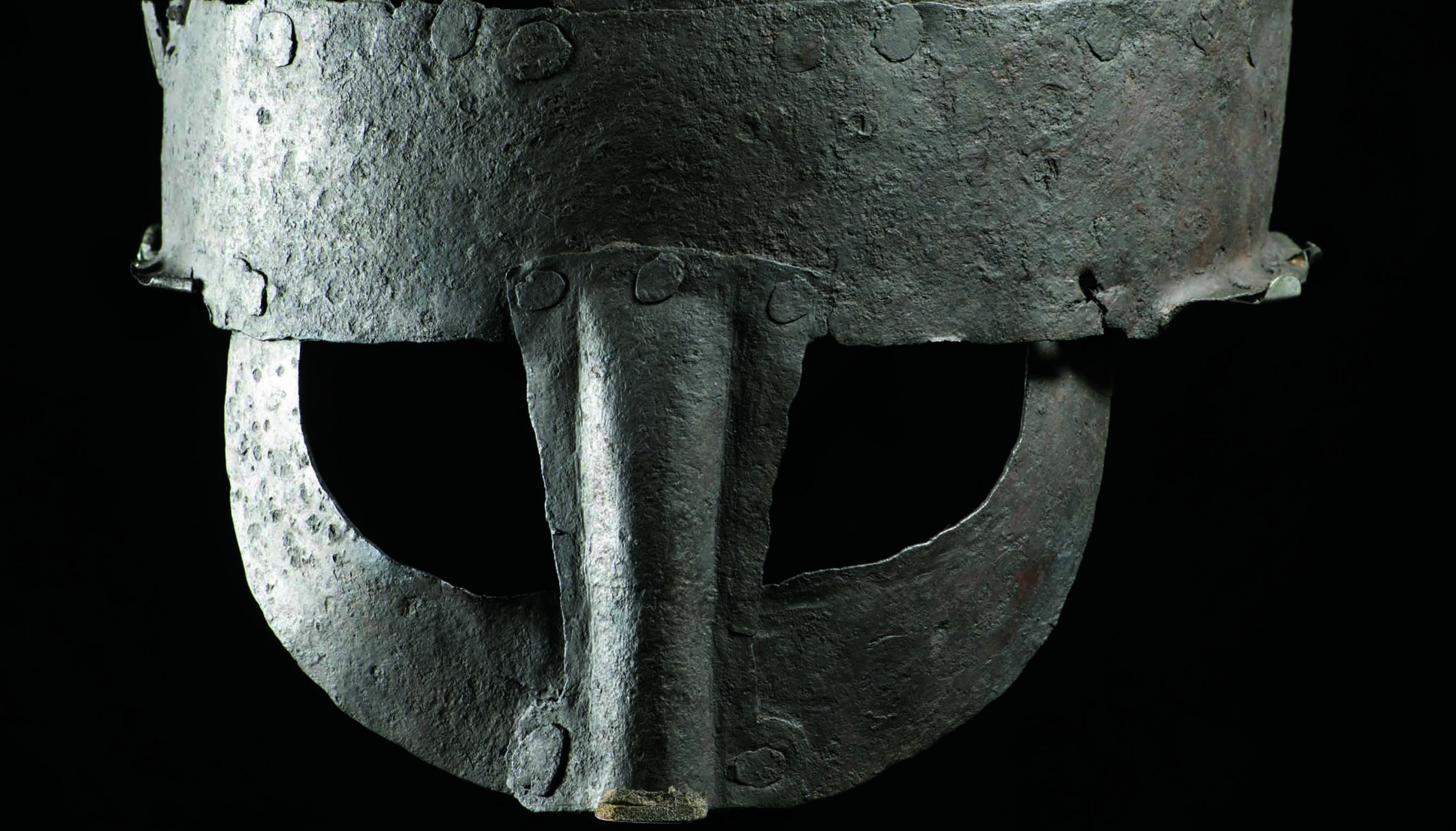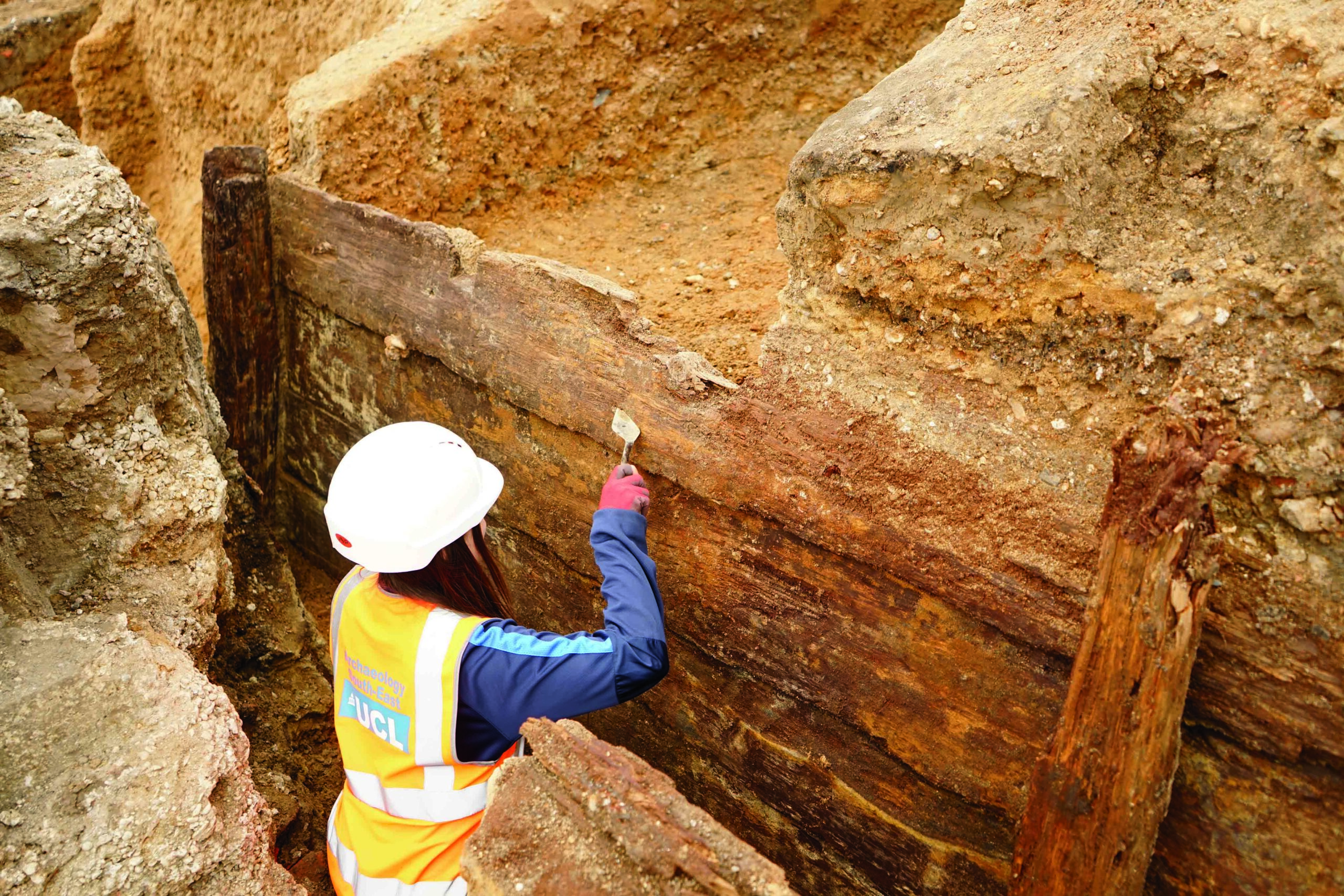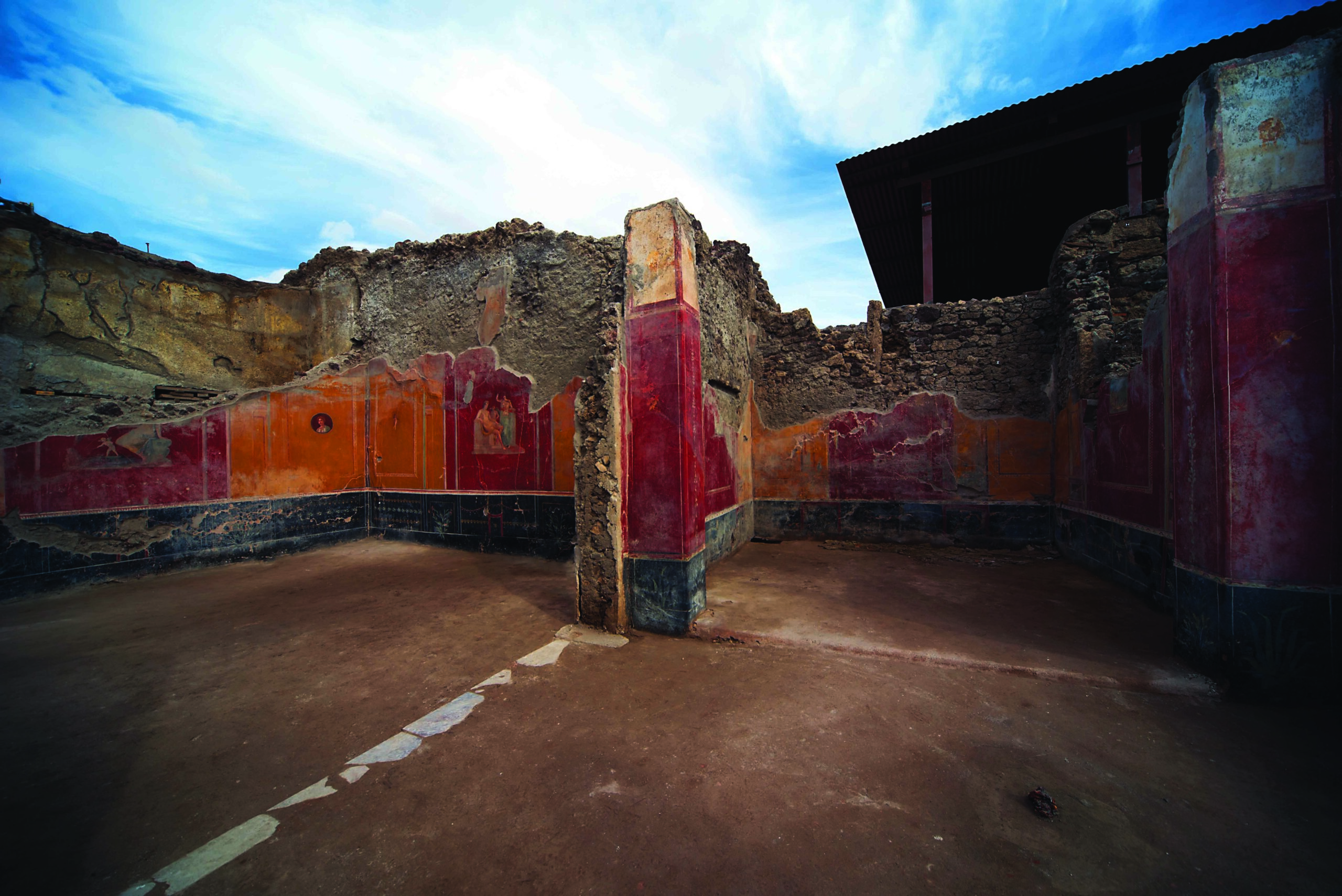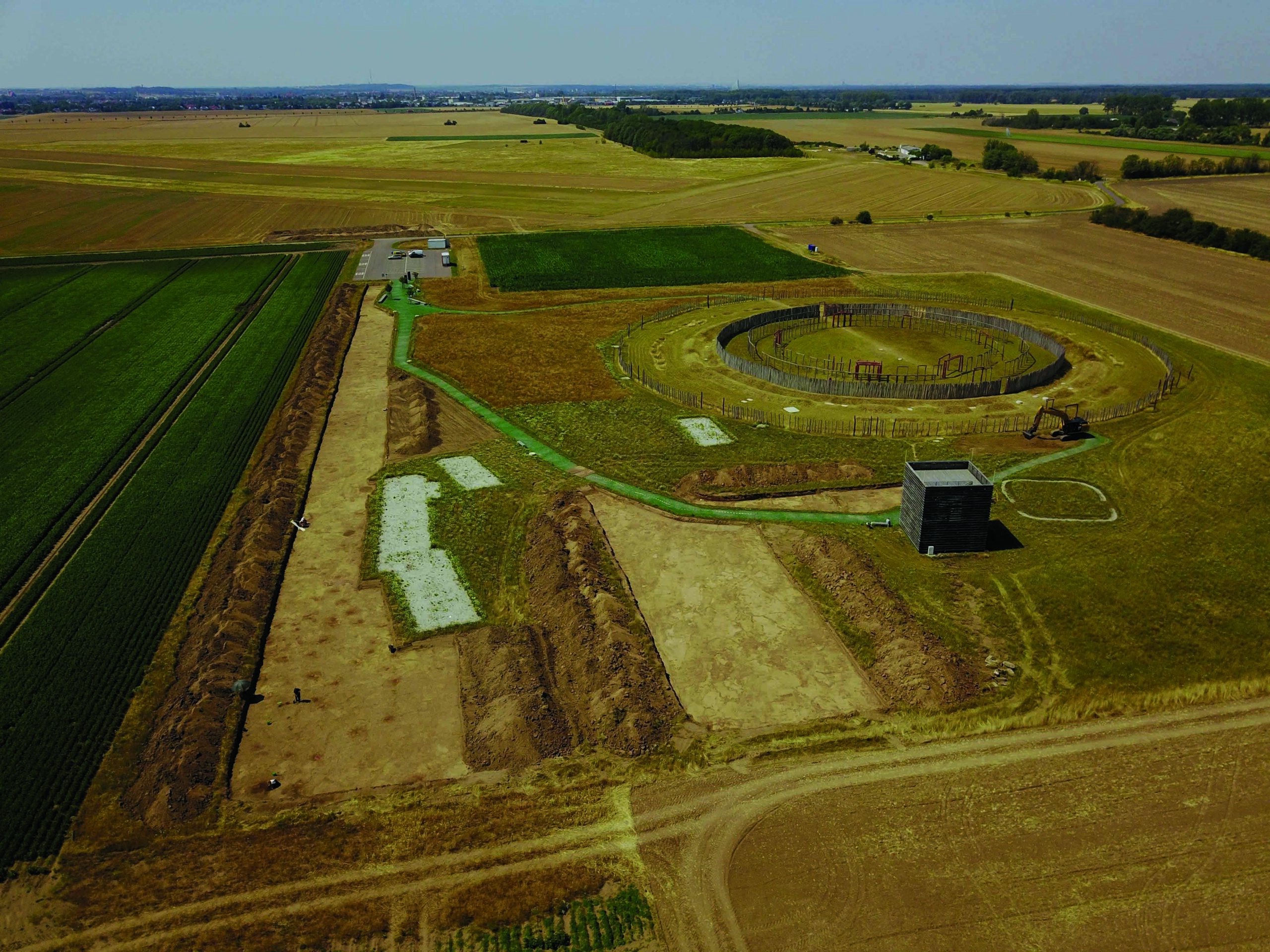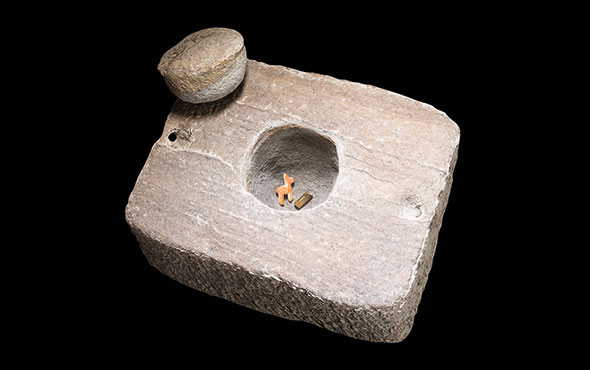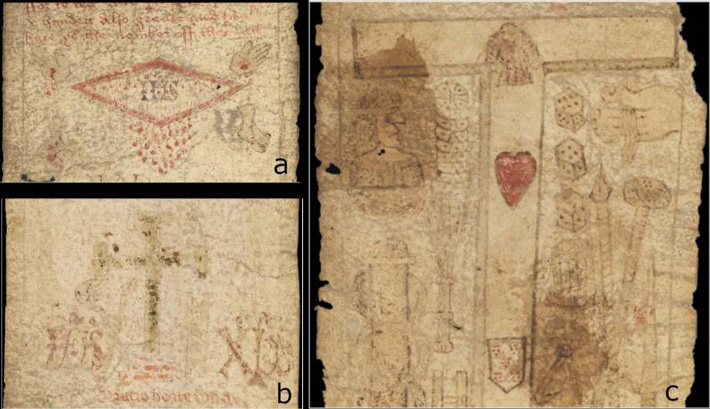
CAMBRIDGE, ENGLAND—Live Science reports that biochemist Sarah Fiddyment of the University of Cambridge analyzed the surface of a medieval birthing girdle—a ten-foot-long strip of narrow parchment covered with Christian imagery including the wound on the side of the crucified Christ, dripping blood, crucifixion nails, a sacred heart and shield, and a human figure that may represent Jesus. Such girdles were made of parchment or silk and were loaned to women in late pregnancy as a protection from danger in childbirth by churches and monasteries in exchange for donations. “This particular girdle shows visual evidence of having been heavily handled, as much of the image and text have been worn away,” Fiddyment said. “It also has numerous stains and blemishes, giving the overall appearance of a document that has been actively used.” Fiddyment and her colleagues detected the presence of proteins from honey, cereals, legumes, and milk, which were all ingredients in medieval treatments for childbirth, in addition to 55 human proteins found in bodily fluids. “This can provide a further possible indication that the roll was indeed actively used during childbirth,” she explained. Birthing girdles fell out of use after the Dissolution of the Monasteries in the mid-sixteenth century. Read the original scholarly article about this research in Royal Society Open Science. For more on women's garments from this period, go to "Medieval Fashion Statement."
